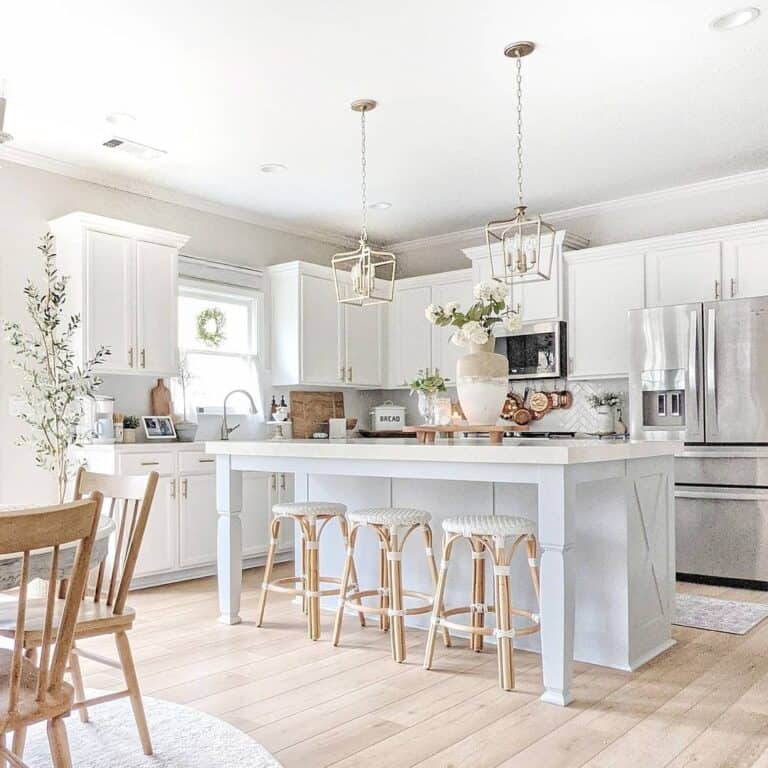Important Elements to Consider When Picking Legs For Cooking Area Island
Choosing the suitable legs for a kitchen island involves a mindful evaluation of multiple factors that can dramatically affect both performance and visual allure. Among these, the choice of product plays a critical role in making certain toughness, while the design has to match the existing design. Furthermore, factors to consider such as height and weight assistance are vital for stability and convenience. As we check out these components, it ends up being clear that each choice can have significant implications for the general kitchen experience. What nuances should be taken into consideration in each of these classifications to attain the optimal equilibrium?
Material Options
When choosing legs for a cooking area island, understanding the different product options is vital for achieving both visual charm and structural honesty (Legs For Kitchen Island). The selection of product dramatically influences not only the longevity of the island but additionally its total design and capability
Metal legs, commonly made from stainless steel or wrought iron, contribute a industrial and contemporary feeling while ensuring durability and stability. These products are resistant to wear and can support considerable weight, making them excellent for larger islands.
One more choice is engineered products, like MDF or plywood, which can be extra cost-efficient while still supplying a series of surfaces. Nevertheless, they may not give the very same level of stability as strong timber or metal. Finally, materials such as acrylic or glass can develop a contemporary look, though they might need additional assistance to make sure stability.
Inevitably, the choice of product for kitchen area island legs ought to straighten with the preferred functionality and the general theme of the cooking area.
Style and Style

When considering style, the shape and finish of the legs are crucial. Tapered legs can offer a sense of lightness and elegance, while thicker, a lot more durable legs can convey toughness and security. Furthermore, the surface-- be it painted, stained, or natural-- should complement the kitchen cabinetry and kitchen counter products to produce a unified look.
Furthermore, the design of the legs can also mirror individual preference. Customized or decorative legs, such as those featuring detailed makings or special geometric shapes, can act as prime focus, including character and personality to the cooking area. Eventually, the best choice will certainly not just enhance functionality yet likewise elevate the visual charm, making the kitchen island a standout attribute of the home.
Height Considerations
Choosing the proper elevation for kitchen island legs is critical, as it directly affects both capability and comfort. The common height for a kitchen area island commonly ranges from 36 to 42 inches, lining up with common kitchen counter heights.

It is likewise important to account for customers' choices and heights. Tailoring the height can make certain a more information comfortable experience for all relative, making the kitchen island an extra useful and pleasurable room.
Weight Support
Ensuring appropriate weight support for cooking area island legs is important for both safety and security and performance. The cooking area island commonly serves several purposes, including food prep work, dining, and added storage, requiring a durable support framework. When selecting legs, it is vital to consider the general weight ability required based upon the island's planned use and the products that will certainly be placed on it.
The option of product for the legs plays a significant function in their weight-bearing capacities. Solid wood, steel, and heavy-duty composites normally give exceptional stamina contrasted to lighter materials. Additionally, the style of the legs-- whether they are right, tapered, or have a pedestal form-- can influence their capability great site to disperse weight properly across the structure.
Constantly get in touch with the supplier's requirements pertaining to lots restrictions to make certain that the legs can maintain the designated weight without jeopardizing security. In summary, selecting cooking area island legs with ample weight assistance is necessary for creating a safe and useful culinary room.
Installment and Upkeep
Appropriate installation and upkeep of kitchen area island legs are vital for guaranteeing longevity and security. To start, it is necessary to follow the supplier's standards during installment. This commonly includes securing the legs to the space station utilizing appropriate bolts, guaranteeing that the legs are degree and lined up. Utilizing a degree tool can aid stop wobbling and boost the overall visual charm of the cooking area island.
Once mounted, regular maintenance is essential to protect the honesty and appearance of the legs - Legs For Kitchen Island. For wood legs, regular cleansing with a wet cloth and application of appropriate timber polish can stop moisture damage and keep their finish. Metal legs might call for a gentle cleaning option to remove grease and gunk, adhered to by a dry fabric to stop rust formation
Furthermore, evaluate the legs routinely for indications of wear or damage, such as fractures or loosened joints. Tightening up screws or screws as required can additionally lengthen see page the life-span of the legs. By sticking to these installment and upkeep techniques, homeowners can ensure that their kitchen island remains durable and visually appealing for years to come.
Conclusion

Aesthetic coherence is vital in picking the style and design of legs for a kitchen area island, as these aspects substantially affect the overall ambiance of the area. Tapered legs can supply a feeling of agility and style, while thicker, more robust legs can convey strength and stability.Selecting the proper elevation for kitchen area island legs is critical, as it straight influences both capability and convenience. In recap, picking cooking area island legs with ample weight assistance is essential for creating a safe and functional cooking room.
In verdict, choosing legs for a kitchen area island requires cautious consideration of various factors, including product choices, style, height, weight support, and installment.
Comments on “Resilient and Elegant Selections for High-Quality Legs For Kitchen Island”